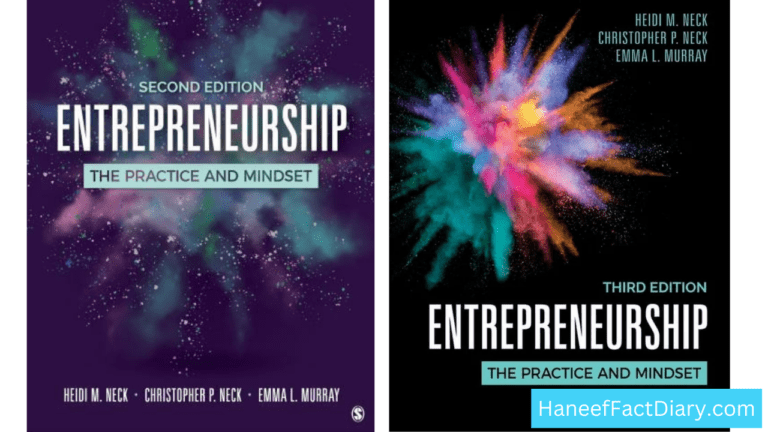Building Grit & Overcoming Challenges Guide
Welcome to our comprehensive guide on building grit and overcoming challenges. We all face obstacles in life, but with the right mindset and strategies, we can learn to overcome them and persevere. Building grit and resilience is key to success in any aspect of life, be it personal or professional.
In this guide, we will provide practical tips, tools, and strategies to help you build resilience and a growth mindset. Whether you are a student, an entrepreneur, or simply seeking to overcome challenges in life, our guide will equip you with the knowledge and techniques to navigate obstacles and persevere.
Key Takeaways:
- Building grit requires perseverance and resilience.
- A growth mindset is essential in developing grit.
- Cultivating strategic thinking can aid in overcoming obstacles.
- Embracing innovation and adaptability is crucial for building grit.
- Self-awareness and continuous learning are important aspects of building grit.
Understanding Grit and Resilience
Grit can be defined as the perseverance and passion for long-term goals despite obstacles and setbacks. It remains a significant factor in developing resilience. In education, cultivating grit can help students stay engaged and motivated, even when faced with challenges. In the workplace, it can drive individuals to work tirelessly toward their goals.
Grit Building Definition
The concept of grit first emerged in a 2007 research paper by psychologist Angela Duckworth. Since then, grit has gained attention in various fields for its role in cultivating resilience. In essence, grit is a combination of perseverance and passion that drives individuals to achieve their long-term goals, even when faced with obstacles and failures.
Building Grit in Education
In education, cultivating grit is essential for creating a learning environment that fosters resilience and perseverance. Teachers can incorporate activities that promote grit, such as challenging projects, goal-setting, and emphasizing effort over talent. Additionally, nurturing a growth mindset can help students build grit by encouraging them to persist even when things get tough.
| Examples of Grit in School | Why it Matters |
|---|---|
| Studying for an exam even when it seems impossible to pass | Grit helps students overcome challenges and build resilience in the face of failure |
| Working on a long-term project even when faced with setbacks | Grit encourages students to stay committed to their goals, even when the going gets tough |
Examples of Grit in the Workplace
The workplace is another environment where grit plays a crucial role in driving success. Employees with grit are better equipped to handle challenging tasks, stay focused on long-term goals, and remain committed to their work. Additionally, cultivating a culture of grit in the workplace can help team members stay motivated and engaged.
| Examples of Grit in the Workplace | Why it Matters |
|---|---|
| Working long hours to meet project deadlines | Grit helps employees stay focused on their goals despite difficult circumstances |
| Persistently pursuing a project even when met with setbacks | Grit encourages innovation and problem-solving abilities in the workplace |
In the next section, we will explore how developing a growth mindset can contribute to building resilience and grit.
Developing a Growth Mindset
Developing a growth mindset is essential for building grit and overcoming challenges. At its core, a growth mindset is the belief that abilities and intelligence can be developed through dedication and hard work.
Embracing a growth mindset can help you cultivate resilience and navigate obstacles. One strategy for developing a growth mindset is to view challenges as opportunities for learning and growth, rather than as insurmountable barriers.
“My coach told me I run like a girl. So I said if he ran a little faster, he could too.” – Mia Hamm
This quote from soccer star Mia Hamm exemplifies the growth mindset. Instead of being defeated by the negative comment, she used it as motivation to improve her skills.
| Fixed Mindset | Growth Mindset |
|---|---|
| Avoids challenges | Embraces challenges |
| Gives up easily | Persists through obstacles |
| Views effort as fruitless | Sees effort as necessary for success |
| Ignores feedback | Learns from feedback |
By cultivating a growth mindset, you can develop the resilience and perseverance needed to overcome obstacles and thrive.
Read more of this: Entrepreneur’s Mindset: Key to Success Unlocking
Fostering Strategic Thinking and Decision-Making Skills
Developing strategic thinking and decision-making skills is crucial for building grit and overcoming challenges. To approach obstacles with a strategic mindset, it is important to have a clear understanding of what strategic thinking entails and how to apply it effectively.
One practical tip for developing strategic thinking skills is to break down complex problems into smaller, manageable parts. This approach can help you approach challenges more systematically, allowing you to develop a clear plan of action. Another useful technique is to gather as much information as possible before making a decision. Conducting thorough research and seeking out diverse perspectives can help you make more informed, well-rounded decisions.
In addition to these tips, some various tools and exercises can enhance your strategic thinking and decision-making abilities. For example, practicing mindfulness and meditation can help you develop greater clarity and focus, which are essential for strategic thinking. Role-playing exercises can also be useful for honing decision-making skills and developing leadership abilities.
Read more of this: Enhance Your Strategy with Decision-Making Skills
Strategic Thinking Techniques
| Techniques | Description |
|---|---|
| Breaking Down Problems | Divide complex issues into smaller, more manageable parts to develop a clear plan of action |
| Research Gathering | Gather all the information available first and then make an informed decision |
| Mindfulness and Meditation | Develop greater clarity and focus for strategic thinking |
| Role-playing exercises | Hone decision-making skills and leadership abilities |
Incorporating these techniques and exercises into your daily routine can help you develop the strategic thinking and decision-making skills necessary to overcome obstacles and build resilience. By taking a systematic approach to challenges and making well-informed decisions, you can cultivate a mindset of resilience and perseverance, enabling you to thrive in any situation.
Embracing Innovation and Adaptability
In today’s fast-paced world, embracing innovation and adaptability is more important than ever before. At the core of building grit is the ability to approach challenges with a proactive and innovative mindset. Rather than resisting change or becoming overwhelmed by obstacles, cultivating a mindset that embraces new solutions and ways of thinking can help you build resilience and persevere.
Here are some strategies to help you embrace innovation and adaptability:
- Stay flexible: Be open to change and new ideas. This can help you stay nimble and adaptable in the face of unexpected challenges.
- Maintain an open mind: Avoid rigid thinking patterns and be willing to consider different perspectives. This can help you approach challenges with creativity and find innovative solutions.
- Be proactive: Take action to seek out new opportunities and solutions. This can help you stay ahead of the curve and anticipate challenges before they arise.
- Seek collaboration: Work with others to find new and innovative solutions. Collaborating with others can help you tap into diverse perspectives and expertise.
By embracing innovation and adaptability, you can develop a growth mindset that fosters resilience and helps you overcome even the most challenging obstacles. Keep an open mind, seek out new opportunities, and stay proactive in the face of adversity.
Read more of this: Embracing Innovation and Adaptability for Growth
The Power of Self-awareness and Continuous Learning
Self-awareness and continuous learning play a critical role in building grit and overcoming challenges. By exploring the benefits of self-awareness and implementing techniques to enhance it, individuals can develop personal growth and resilience. Similarly, creating a habit of continuous learning promotes growth and provides the tools necessary to navigate obstacles.
Self-awareness refers to an individual’s ability to identify their emotions, thought patterns, and behaviors. The power of self-awareness lies in the fact that it allows individuals to recognize their weaknesses and strengths, enabling them to make informed decisions and adapt to changing circumstances.
Continuous learning is another essential aspect of building resilience. By cultivating a learning mindset, individuals can acquire new skills and knowledge to overcome obstacles in different areas of life. Incorporating continuous learning into daily habits can also lead to greater confidence and self-efficacy.
Read more of this: Self-Awareness and Continuous Learning – Unleash Growth
Techniques for Enhancing Self-awareness
There are various techniques individuals can use to enhance self-awareness:
- Journaling: Writing down thoughts and emotions can help individuals identify patterns and triggers.
- Reflection: Carving out time for self-reflection promotes introspection and self-awareness
- Mindfulness: Practicing mindfulness involves being present in the moment and focusing on one’s thoughts and feelings, promoting self-awareness and emotional regulation.
Cultivating a Habit of Continuous Learning
Individuals can cultivate a habit of continuous learning by:
- Reading: Regular reading exposes individuals to new ideas and perspectives.
- Networking: Building relationships with others in different fields promotes the exchange of knowledge and ideas.
- Seeking feedback: Soliciting feedback from others can provide valuable insight and lead to personal growth.
By embracing self-awareness and continuous learning, individuals can develop the resilience necessary to navigate obstacles and thrive in various areas of life.
Read more of this: Growth Mindset Cultivating and Resilience Strategies
Cultivating Grit in Students
Building grit in students is crucial for academic and personal success. As educators and parents, we can foster resilience and develop grit in young learners through practical strategies and activities.
Emphasize the Growth Mindset
Encouraging a growth mindset is key to developing grit in students. We can emphasize the power of positive thinking and the idea that challenges are opportunities to learn and grow. Emphasize the importance of effort and hard work in achieving success, rather than innate talent.
Encourage Perseverance
We can encourage perseverance by modeling it ourselves and providing opportunities for students to practice. Encourage students to set goals and work towards them, even when facing obstacles. Praise effort, perseverance, and problem-solving over just the end result.
Provide Challenging Opportunities
Give students opportunities to take on challenging tasks and projects that push them outside of their comfort zone. This will help them build resilience and develop the confidence to take on new challenges in the future.
Teach Self-Reflection
Encourage self-reflection and self-awareness in students, helping them to identify their strengths and areas for improvement. This can help them develop a growth mindset and improve their ability to persevere through challenges.
| Activity | Description |
|---|---|
| Goal-Setting | Help students set achievable goals and break them down into smaller tasks. Support them in tracking their progress and celebrating their accomplishments along the way. |
| The Power of Yet | Encourage students to add the word “yet” to the end of their statements when they encounter obstacles. For example, “I can’t do this…yet!” This helps to promote a growth mindset and encourage perseverance. |
| Obstacle Course | Create an obstacle course that requires teamwork, problem-solving, and perseverance to complete. This can help students develop grit and resilience in a fun and engaging way. |
By implementing these practical techniques, we can instill perseverance, resilience, and a growth mindset in young learners, helping them to overcome challenges and achieve success.
Building Grit in Adults
Building grit is not just for students but also important for adults. Developing resilience, perseverance, and a growth mindset can help you overcome obstacles and achieve personal and professional growth. Here are some grit activities for adults to get you started:
- Challenge yourself: Pushing yourself out of your comfort zone is essential for building grit. Take on a new project or try a new activity that challenges you.
- Set goals: Setting achievable goals and working towards them helps develop resilience and perseverance. Make sure your goals are specific, measurable, attainable, relevant, and time-bound.
- Practice gratitude: Focusing on the things you are grateful for helps develop a positive mindset and enhances resilience. Take a few minutes each day to reflect on and express gratitude for the good things in your life.
- Embrace failure: Failure is an inevitable part of life, but it should not hold you back. Instead, use it as an opportunity for growth and learning. Embracing failure helps develop resilience and a growth mindset.
- Stay motivated: Motivation is crucial for building grit. Find activities that inspire and motivate you, and make time for them regularly.
By engaging in these grit-building activities, you can develop the resilience, perseverance, and growth mindset necessary to overcome challenges in various areas of life.
Conclusion
Building resilience and overcoming obstacles require perseverance, resilience, and a growth mindset. We hope that this guide has provided you with practical tips and tools to develop mental toughness and grit-building strategies. Remember that resilience training is an ongoing process, and developing resilience techniques takes time and practice.
By embracing resilience and overcoming adversity, you can unlock your full potential and build resilience in life. Use these grit-building strategies to cultivate self-awareness, strategic thinking, and decision-making skills.
With determination and effort, you can overcome any obstacle with resilience. Use these grit-building strategies and practical tips to build resilience in life and overcome any challenge that comes your way.
FAQ
What is grit?
Grit is a combination of passion and perseverance. It is the ability to maintain long-term goals and push through obstacles and setbacks with resilience and determination.
How can building grit benefit me?
Building grit can benefit you in numerous ways. It equips you with the mindset and skills to overcome challenges, adapt to change, and achieve long-term success in various aspects of life.
What are some examples of grit in school?
Examples of grit in school include students who consistently put in the effort to improve their grades even when faced with difficulties, those who persevere through challenging coursework, and individuals who bounce back from academic setbacks.
How can I develop grit in students?
To develop grit in students, it is important to create an environment that promotes perseverance and resilience. Encourage students to set challenging goals, provide opportunities for them to learn from failure, and foster a growth mindset through praise and feedback.
What are some practical tips for building resilience?
Some practical tips for building resilience include developing a positive outlook, practicing self-care and stress management, seeking support from others, setting realistic goals, and engaging in activities that promote personal growth and self-improvement.
How can continuous learning contribute to building resilience?
Continuous learning enables individuals to stay adaptable and open-minded in the face of challenges. By seeking new knowledge and experiences, individuals can expand their perspectives, develop new skills, and enhance their ability to navigate obstacles and adapt to change.
What are some strategies for developing strategic thinking?
Strategies for developing strategic thinking include analyzing problems from multiple perspectives, setting clear goals, considering the long-term implications of decisions, seeking input from others, and continuously evaluating and adjusting strategies based on feedback and results.
How can embracing innovation and adaptability help me overcome challenges?
Embracing innovation and adaptability allows you to think creatively and find new solutions to problems. It also enables you to adjust and pivot when faced with unexpected circumstances, increasing your ability to overcome challenges effectively.
How does self-awareness contribute to building grit?
Self-awareness allows individuals to identify their strengths and weaknesses, understand their emotions and reactions, and make informed decisions. By being self-aware, individuals can better navigate challenges, adapt their approach, and maintain focus on their long-term goals.
What are some examples of grit in the workplace?
Examples of grit in the workplace include employees who consistently go above and beyond their assigned tasks, those who persistently work towards achieving professional goals despite setbacks, and individuals who embrace challenges and view them as opportunities for growth.
How can I build grit as an adult?
To build grit as an adult, it is essential to set meaningful goals, maintain a growth mindset, strive for continuous improvement, embrace challenges, seek support and feedback, and persevere through obstacles and setbacks.







